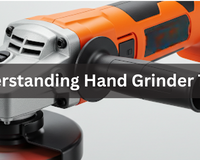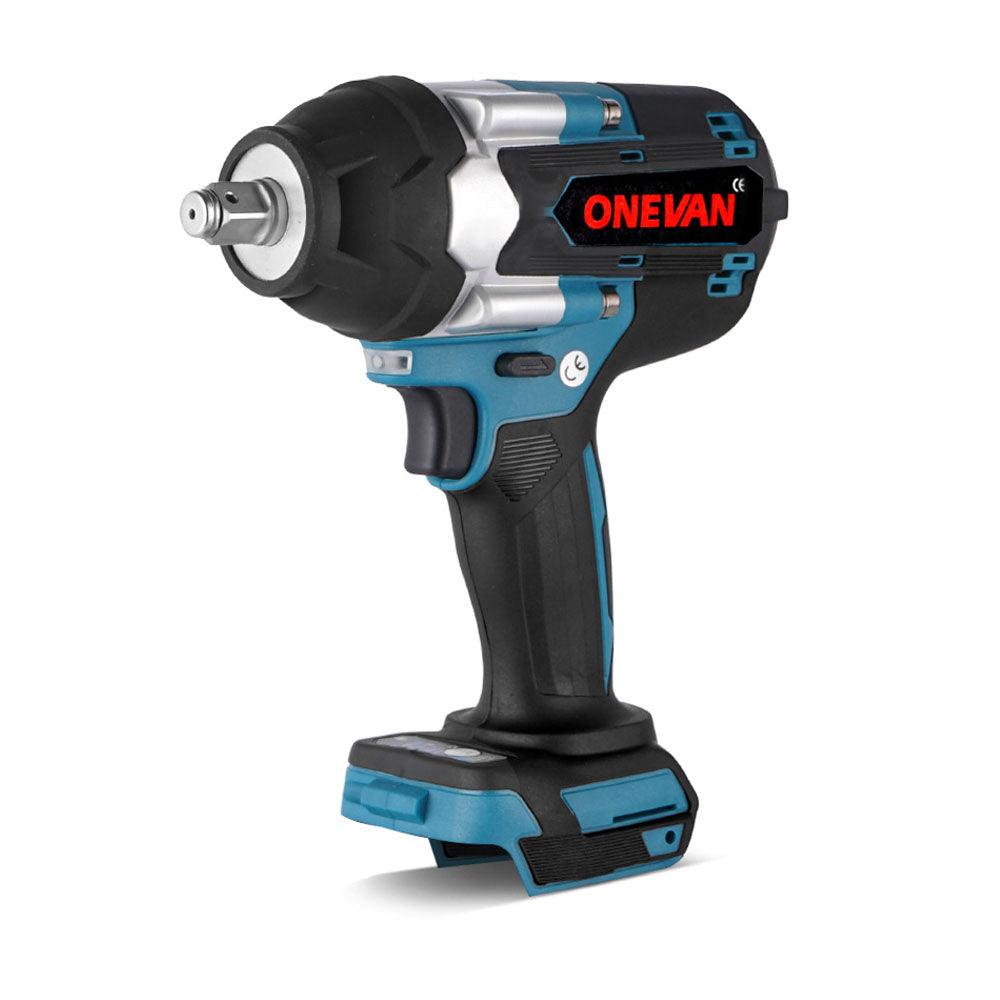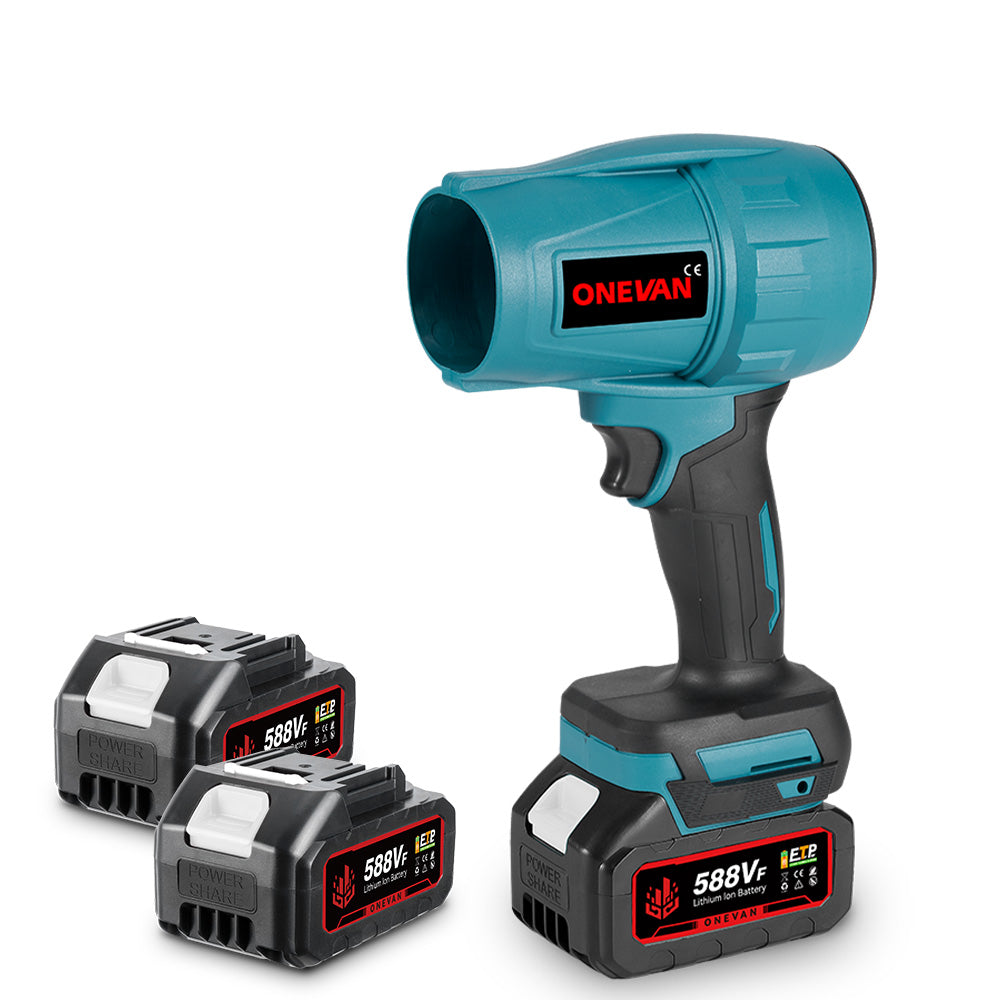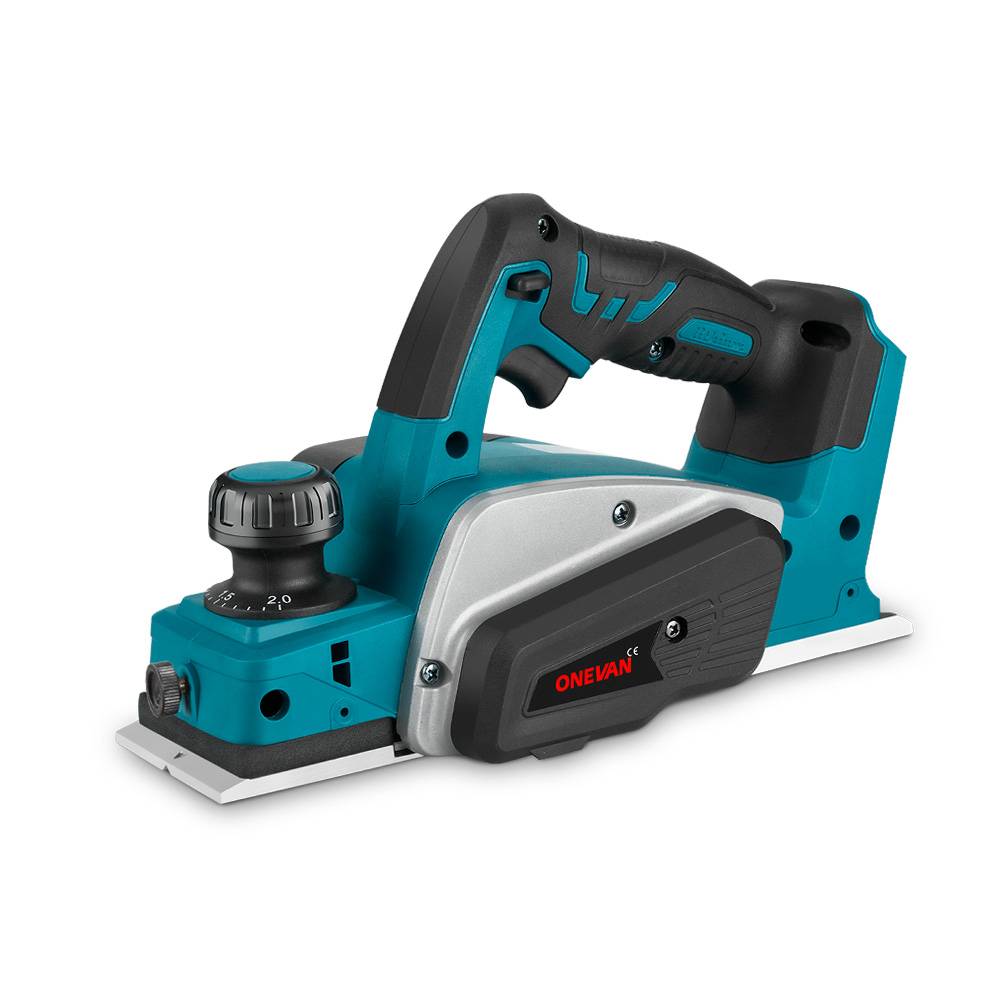DIY enthusiasts and contractors often face this question from homeowners: Can you cut concrete with a circular saw? The answer is yes, but the effectiveness depends on the type of concrete and the specific equipment used. It’s essential to choose the right saw and blade for the job. Perhaps you're wondering if your standard circular saw will suffice. Or you want to know the proper way to cut concrete with a circular saw. This guide gives you everything you need to tackle concrete-cutting projects successfully.
1. Understanding Concrete and the Need for Specialized Tools
What is Concrete?
Concrete is typically a mixture of cement, water, sand, and aggregates like gravel and crushed stone, though various additives and admixtures can be included to enhance specific properties. The mix creates tough building material that gets harder over time. It won’t be wrong if you say that it is the backbone of modern construction. Builders use it for foundations, driveways, sidewalks, and other structural elements due to its strength and longevity.

Types of Concrete
1. Reinforced Concrete
Description: Steel bars or mesh are added to boost tensile strength and prevent cracking.
Uses: Building foundations, bridges, high-rise structures, and retaining walls.
Cutting Considerations: Plan carefully, as you'll encounter both concrete and steel. Standard diamond blades struggle with rebar. You might need specialized cutting tools.
2. Pre-Mixed Concrete
Description: Factory-mixed concrete is delivered and ready to pour. Ensures consistent quality and proper ratios.
Uses: Driveways, sidewalks, patios, and small to medium construction projects.
Cutting Considerations: Easier to cut than other types because of controlled mixing ratios. A circular saw with a concrete blade works well for most jobs.
3. High-Strength Concrete
Description: Engineered for applications requiring significant compressive strength, often exceeding 6,000 psi. It uses specialized additives and mixed designs.
Uses: Skyscrapers, bridges, marine structures, industrial facilities, and other applications requiring enhanced structural integrity and durability.
Cutting Considerations: Extremely tough to cut. It may require professional-grade equipment that exceeds the capabilities of a typical circular saw.
4. Lightweight Concrete
Description: Utilizes lightweight materials, such as expanded clay or pumice, to minimize weight. Still maintains strength.
Uses: Roof decks, precast panels, and situations where weight reduction matters.
Cutting Considerations: Easier to cut than standard concrete. A regular circular saw with a concrete blade often works fine.
5. Self-Consolidating Concrete (SCC)
Description: Flows easily into forms without vibration. Creates dense, uniform results.
Uses: Complex architectural elements, heavily reinforced structures, and areas with restricted access.
Cutting Considerations: A dense composition may require more powerful cutting equipment. Due to the dense composition of some concrete types, you may expect frequent blade changes; to manage this, monitor the blade's performance and have replacements on hand for continuous work.
6. Pervious Concrete
Description: Contains interconnected voids that let water pass through. Supports sustainable drainage.
Uses: Parking lots, walkways, and stormwater management systems.
Cutting Considerations: The porous nature makes it more fragile during cutting. Use gentle, steady pressure to prevent chipping.
7. Fiber-Reinforced Concrete
Description: Synthetic or steel fibres are mixed throughout to improve crack resistance and toughness.
Uses: Industrial floors, airport runways, and structures needing enhanced durability.
Cutting Considerations: Fibres can cause blade binding and uneven cuts. Sharp, high-quality diamond blades are essential for effective cutting, as their quality directly impacts cutting efficiency, safety, and the longevity of both the blade and the saw.

Why Cutting Concrete is Challenging
1. Hardness of Concrete
Composition: Cement, aggregates, and chemical reactions create material harder than most natural stones.
Durability: Concrete's compressive strength can exceed 4,000 psi. This makes it extremely resistant to cutting forces.
Tensile Weakness: Strong in compression but weak in tension. This leads to chipping and cracking during improper cutting.
2. Specialized Tools Required
Limitations of Standard Saws: Regular wood-cutting blades will dull instantly. They might damage your saw when used on concrete.
Dull Blades: Wrong blades generate excessive heat. They reduce cutting efficiency and create dangerous kickback situations.
Damage to Tools: Trying to cut concrete without proper equipment can burn out motors. It damages expensive tools.
Need for Diamond Blades: Only diamond-embedded blades can effectively cut through the abrasive surface of concrete.
The Advantages of Using Diamond Blades Include:
Enhanced Cutting Power: Diamond particles stay sharp throughout the cutting process. This ensures consistent performance.
Precision and Clean Cuts: Professional-grade diamond blades produce smooth, clean cuts. They create minimal chipping.
3. Wet Cutting vs. Dry Cutting
Wet Cutting
Uses water to cool the blade and suppress dust. Provides cleaner cuts and extends blade life. Requires careful setup of a water supply to cool the blade and manage dust, which may not be feasible in all environments.
Dry Cutting
Relies on blade design and cutting technique for heat management. While dry cutting may be more convenient in some contexts, it generates significant dust, which can pose health risks and necessitates the use of proper dust management techniques, such as using vacuums or working in well-ventilated areas. It may require more frequent blade changes.
2. Can You Cut Specific Types of Concrete with a Circular Saw?
Cutting Concrete Pavers with a Circular Saw
Can you cut concrete pavers with a circular saw? Concrete pavers are actually some of the friendliest concrete products to work with when it comes to cutting. They're usually not too thick, and they're made with standard concrete - nothing fancy that'll give you headaches.
Now, let me walk you through cutting concrete pavers with your circular saw. First, grab some chalk or a pencil and mark the cut line clearly. You'll want a segmented diamond blade meant for masonry. Here's the trick that'll save you a lot of frustration: don't try to power through in one shot. Making several light passes instead of forcing a deep cut will help keep your blade cooler and minimize chipping on your pavers.
What experts like to do is score the paver really lightly on their first pass, just kissing the surface. Then they come back and go a little deeper each time. Ensure that the paver is properly supported to prevent it from snapping during the cut. Take your time with it. Circular saws are just more convenient, especially when I'm only doing a few cuts.
Cutting Concrete Blocks with a Circular Saw
Now, concrete blocks are a whole different story because they're hollow inside. That changes everything about how you approach the cut. You can't just treat them like solid concrete.
When professionals cut blocks, they mark all the cut lines first, including all sides where cuts are required. For the cleanest look when cutting concrete blocks, it is recommended to use a continuous-rim diamond blade, as it provides smoother cuts with minimal chipping.
Start cutting from one side and maintain steady pressure, but avoid forcing the motion. Here's what happens - once you break through that outer shell, there's suddenly less resistance because of the hollow centre. That can catch you off guard if you're not ready for it.
Always support both sides of the block while you're cutting. Otherwise, you might get cracks where you don't want them. If you need to make precise cuts, such as fitting around pipes or other obstacles, you'll first make small relief cuts at the corners. Makes the main cut much cleaner.
Cutting Concrete Slabs with a Circular Saw
Concrete slabs are where things get interesting. How thick we're talking makes all the difference. Most regular circular saws can handle slabs up to about 2-3 inches thick without much effort. That covers most of what you'll run into around the house - fixing sidewalks, cutting decorative concrete, that sort of thing.
If you're dealing with thicker materials, consider making multiple shallow passes from different angles to ensure a clean cut while minimizing the risk of blade binding or overheating; otherwise, it's time to rent one of those walk-behind concrete saws.
For regular slabs with a circular saw, start with a shallow scoring cut to establish your line, then continue to deepen with each pass. Same principle as the pavers - patience pays off.
This method prevents blade binding and overheating. It produces cleaner results, too.
Pay special attention to blade depth adjustment. Set the blade to cut just slightly deeper than necessary to avoid hitting the subgrade or subbase, which can contain rocks or other materials that might damage your blade.
Always use wet cutting when possible for slab work. The dust control and cooling benefits become more critical with larger cutting surfaces.
3. Choosing the Right Circular Saw Blade for Concrete
Types of Diamond Circular Saw Blades
Continuous Rim Blades
Description: Features an uninterrupted cutting edge with diamonds embedded in a smooth rim. This design provides the smoothest cutting action and minimal chipping.
Applications: Perfect for cutting concrete pavers, decorative concrete, and situations where finish quality is paramount. Ideal for clean, precise cuts on visible surfaces.
Segmented Blades
Description: There are gaps between diamond-embedded segments. Allow for aggressive cutting and efficient debris removal. The segments help dissipate heat and provide faster cutting speeds.
Applications: Best suited for general concrete cutting, concrete blocks, and situations where cutting speed is more important than finish quality. Excellent for demolition work and rough-cutting tasks.
Turbo Blades
Description: Combine features of both continuous rim and segmented blades with a serrated edge pattern. This design strikes a balance between cutting speed and finish quality.
Applications: Versatile option suitable for most concrete cutting jobs. Works well for both rough and finish-cutting tasks.
Recommendations for Specific Projects
DIY Projects
Recommended Blade Segmented Blade
Example: A 7-inch segmented diamond blade for a circular saw provides excellent value and performance for homeowner projects.
The ONEVAN 180mm Brushless Cordless Circular Saw is the best choice for DIY tasks. For example, it carries a lightweight design for easy one-handed operation and reduced fatigue.
Tips: Choose a blade with a 5/8-inch or 7/8-inch arbour to fit most consumer circular saws. You should select blades rated for both wet and dry cutting to maximise versatility.
Professional Use
Recommended Blade: Turbo Blade
Example: A 12-inch turbo diamond blade offers the best balance of cutting speed and longevity for contractors.
Benefits: Faster cutting speeds reduce labour costs. Improved heat dissipation extends blade life. The versatile design effectively handles a wide range of concrete types.
Precision Projects
Recommended Blade: Continuous Rim Blade
Example: A 10-inch continuous-rim diamond blade delivers professional-quality finishes for architectural concrete work.
Considerations: Slower cutting than other blade types. However, the superior finish quality justifies the extra time required for visible jobs, such as countertops or decorative elements.
4. How to Cut Concrete with a Circular Saw
Step 1: Preparation Before Cutting
Choose the Right Tools and Equipment
Before you begin learning how to cut concrete with a circular saw, ensure your saw has enough power. A minimum 15-amp motor is recommended for effective concrete cutting. Check that you can use a concrete blade on a circular saw. Verify the arbour size to ensure compatibility with your saw, as the wrong size can prevent proper blade installation and operation, and check the maximum blade diameter specifications to avoid using oversized blades."
For example, the ONEVAN 180mm 7-inch Brushless Cordless Circular Saw delivers 4000W of power. It also offers a speed of 11,000 RPM. Simply, it is a powerful choice for concrete cutting.
Mark the Cutting Line
Use a chalk line or a straight edge to mark your cut clearly. Double-check measurements before cutting. Concrete cuts are difficult to correct. For long cuts, snap a chalk line to ensure the cut is straight.
Set Up the Work Area
Clear the area of debris and ensure adequate lighting. Position the concrete piece on stable supports that are level and secure, ensuring they won't interfere with your cutting line or shift during the cutting process. Plan your cutting sequence to maintain material stability throughout the process.
Prepare Water Source
Suppose wet cutting sets up a continuous water supply. For example, you can easily use a garden hose with a spray nozzle or a dedicated water feed system. Ensure proper drainage to prevent water accumulation that could create slip hazards.
Step 2: Safety Precautions and Gear
Wear Appropriate Safety Gear
Never try to cut concrete without proper protection. Concrete cutting generates significant dust, noise, and debris that can cause serious injury.
ONEVAN 125mm Brushless Cordless Circular Saw also incorporates a manual control switch and lock button. The purpose of safety features such as a manual control switch and lock button is to enhance user control and prevent accidental starts, which are critical when working with concrete.
Safety Goggles
You should wear safety goggles during your work. Small particles often damage your eyes.
Dust Mask
Experts recommend using an N95 or P100 respirator to prevent inhaling concrete dust, along with ensuring proper ventilation in the work area to minimize dust exposure. In many cases, dust is seen to cause silicosis over time.
Ear Protection
Concrete cutting is extremely loud. Use earplugs or noise-cancelling ear muffs to prevent hearing damage.
Gloves
Heavy-duty work gloves protect your hands from cuts, abrasions, and vibration.
Protective Clothing
Wear long sleeves and pants made from durable materials to protect your skin from debris. Avoid wearing loose clothing that could catch on the saw.
Steel-Toed Boots
Protect your feet from dropped tools or concrete pieces.
Inspect Equipment
Thoroughly inspect your circular saw for proper operation, ensuring the blade is securely mounted, the guard is functional and unobstructed, and all safety features are working correctly.
Step 3: Cutting the Concrete
Begin Cutting
Start your saw before contacting the concrete. Allow the blade to reach full speed. Then, slowly lower it into the material. Let the blade do the work. Don't force it, as this can cause blade binding, overheating, or dangerous kickback. For thick materials, make multiple passes to ensure a smooth finish. Cut deeper each time. This approach prevents overheating and produces cleaner cuts. Maintain steady forward pressure without pushing too aggressively.
Maintain Cooling and Dust Control
If dry cutting, pause periodically to allow the blade to cool. Watch for signs of overheating, like decreased cutting speed, sparking, or blade discolouration. When wet cutting, ensure consistent water flow to the cutting area to effectively cool the blade, control dust, and maintain cutting efficiency. For dust control during dry cutting, work in well-ventilated areas. Consider using a vacuum attachment if available. Position yourself upwind of the cutting area when possible.
Finish Cutting and Clean Up
Complete your cut with steady, controlled movements. Support the cut piece to prevent binding as you finish. After cutting, allow the blade to come to a complete stop before setting down the saw. Clean up debris promptly. Properly dispose of concrete waste according to local regulations, which may include recycling options or designated disposal sites for construction debris. Regularly rinse diamond blades after wet cutting to remove debris and inspect them for wear or damage, as proper maintenance extends blade life and maintains cutting efficiency.
5. Conclusion
Can you cut concrete with a circular saw? Absolutely. With a good diamond blade, solid technique, and the right safety gear, your circular saw can handle a surprising amount of concrete work. Successful concrete cutting with a circular saw relies on understanding the type of concrete, selecting the appropriate blade, and following proper cutting techniques and safety precautions.
Homeowners often ask, Can I use my circular saw to cut pavers for my patio? Or I'm building a retaining wall - will this thing cut through concrete blocks? The answer is usually yes, but successful concrete cutting with a circular saw requires careful consideration of the type of concrete, the selection of an appropriate blade, and adherence to safety protocols.
Remember that while you can use my circular saw to cut concrete, success depends on matching your blade to the specific concrete type and project requirements. For most DIY jobs involving concrete pavers, blocks, or thin slabs, a quality circular saw with the right diamond blade will deliver professional results.
6. FAQs
Can I use a regular circular saw to cut concrete?
Yes, your regular circular saw works fine for concrete. You simply need to replace the wood blade with a diamond masonry blade. It won't power through thick concrete like the big saws, but it handles pavers and thin slabs just fine.
What to do if the saw blade overheats when cutting concrete with a circular saw?
Stop cutting immediately and let the blade cool completely. Don't force the cut or try to power through - that's what causes overheating. Make shallow passes and take breaks between cuts to prevent this from happening.
How do you handle dust and debris after cutting concrete with a circular saw?
When cutting concrete, wear a dust mask to protect your health and ensure good ventilation in the work area. If working outdoors is possible, minimise dust exposure by doing so. When cleaning up, use a shop vacuum, as regular vacuums may struggle to handle heavy dust. If you're outside, be cautious of wet concrete dust.









